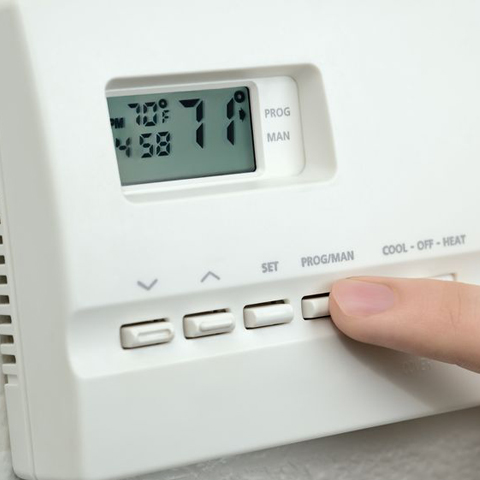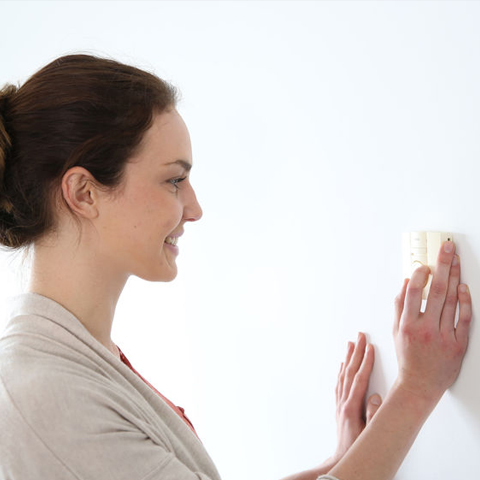 Quality thermostat services
Quality thermostat services
Owning a home is a wonderful thing until things go wrong. Like the water heater quits or the thermostat can’t keep up, the roof leaks, etc. Those are things that can sometimes make you wish you were still renting. Take a deep breath and continue reading this piece to get a little insight into a thermostat or thermometer and answers to some commonly asked questions about the part of your home that keeps it comfortable year-round.
What is the thermostat used for?
This article is about the thermostat that controls the AC and heat in your home. You will also find this component that senses the temperature there in several other parts of your life. From the HVAC system to the oven, refrigerator, water heater, and more, even your car! Thermostats perform actions in these devices or systems to maintain a setpoint temperature.
A thermostat is such a big part of our everyday lives, they consume half of the electricity. This control device is a “closed-loop” that seeks to decrease any error between the desired temperature, which you determine on the gadget in your hallway, and the temperature it measures in your home.
What is the purpose of the thermostat?
The essential function of the thermostat in your home is to control the air condition and heating as needed depending on the temperature of the room and the desired temperature you set the device. Newer thermostat models display the temperature in the house and can be adjusted to cool or warm as you desire.
How does the thermostat work?
A thermostat controls the temperature in an HVAC system to maintain the preferred temperature you have chosen. If the temperature rises in the summer, the thermostat turns the AC on and if it cools during the winter, it turns the heat on.
Except for water, when things like mechanical thermostats heat, they expand, and when they cool off, they constrict. This is thermal expansion and is typically taught in basic science classes. Thermal expansion is the basis of how mechanical thermostats work, switching on and off an electrical circuit.
There are 2 metal pieces inside a traditional thermostat that form a bimetallic strip that bridges an electrical circuit to the heating system. In normal operations, when the strip is down, it carries electricity through the circuit and turns the heat on. Once it heats, the metal expands more so the other piece will slightly bend until it opens the circuit. When the strip is up, the electricity is instantly switched off and the heating turns off.
An alternative thermostat design is gas-filled bellows, which picks up that temperature changes faster than the above described bimetallic strip. This thermostat has corrugated discs that are flexible and springy, enabling them to react faster. As a room warms up, the bellows expand with the gas and separate the discs. The inner disc activates a microswitch by pushing it to turn on the electric circuit. As the room cools down, the gas contracts in the bellows, forcing the metal discs back together.
What are the symptoms of a bad thermostat?
Of all the major components in your home, like the roof, the water heater, and thermostat, the one that doesn’t have a set life expectancy is the thermostat. Typically, they last for around 10 years, and by that 10th year, they malfunction, because the wiring inside them is aging, or they fill with dust.
Here are four signs that are telling you your thermostat needs replacing:
- No power or response from the thermostat: If you move the thermostat to cool or heat the house and there isn’t any change in the temperature, or if it has a digital display that doesn’t light up or respond. For, a digital thermostat, try replacing the thermostat battery first. For an old-style thermostat, it is time to replace the unit.
- The A/C or heater aren’t turning ON: If the A/C or heat isn’t turning, this sometimes is an indication of a wiring defect that is preventing electrical signals from reaching the cooling/heating system.
- The A/C or heater won’t turn OFF: When the A/C or heating runs constantly, either the wiring is frayed, or the thermostat has miscalibrated.
- The room temperature and the setting don’t match:
- When the room temperature is fluctuating between rooms from what the setting is set on the thermostat, this is a subtle sign the thermostat is broke.
 Replacing a thermostat
Replacing a thermostat
If you determine that you need to replace your thermostat, your first question maybe What is the best thermostat? First, you need to remember that the goal of a good working thermostat is one that will keep the temperature in your home “just right” while keeping the energy usage low.
Today, there are programmable thermostats and smart thermostats, the homeowner can easily install. However, if you aren’t a DIY homeowner, hiring an authorized AC/Heating service is an excellent option. The “best” thermostat isn’t the cheapest, nor is it the most expensive one. There are several factors to consider when choosing the best one for your home and usage.
If you go with a programmable thermostat, there are several models of consumer and professional high scores. You can narrow the selection down for you by looking at the different model’s features, performance, and price. Other things you should consider are the specific attributes like color, size, and even style to match the décor of your home.
Today, the biggest feature in thermostats are the smart models. You can control the setting remotely via your cell phone or computer. Some models use multiple sensors that monitor temperatures in your home to keep the cooling and heating balanced, i.e., no more cold spots or hot spots. Another feature that you may want to consider next time is a thermostat with humidity control. This can be a great feature in homes that have somebody with breathing difficulties or in certain areas of the country where humidity is an issue. When you are ready for thermostat repair in Macon, GA, call Total Comfort Cooling & Heating, LLC today at 478-781-9107!




